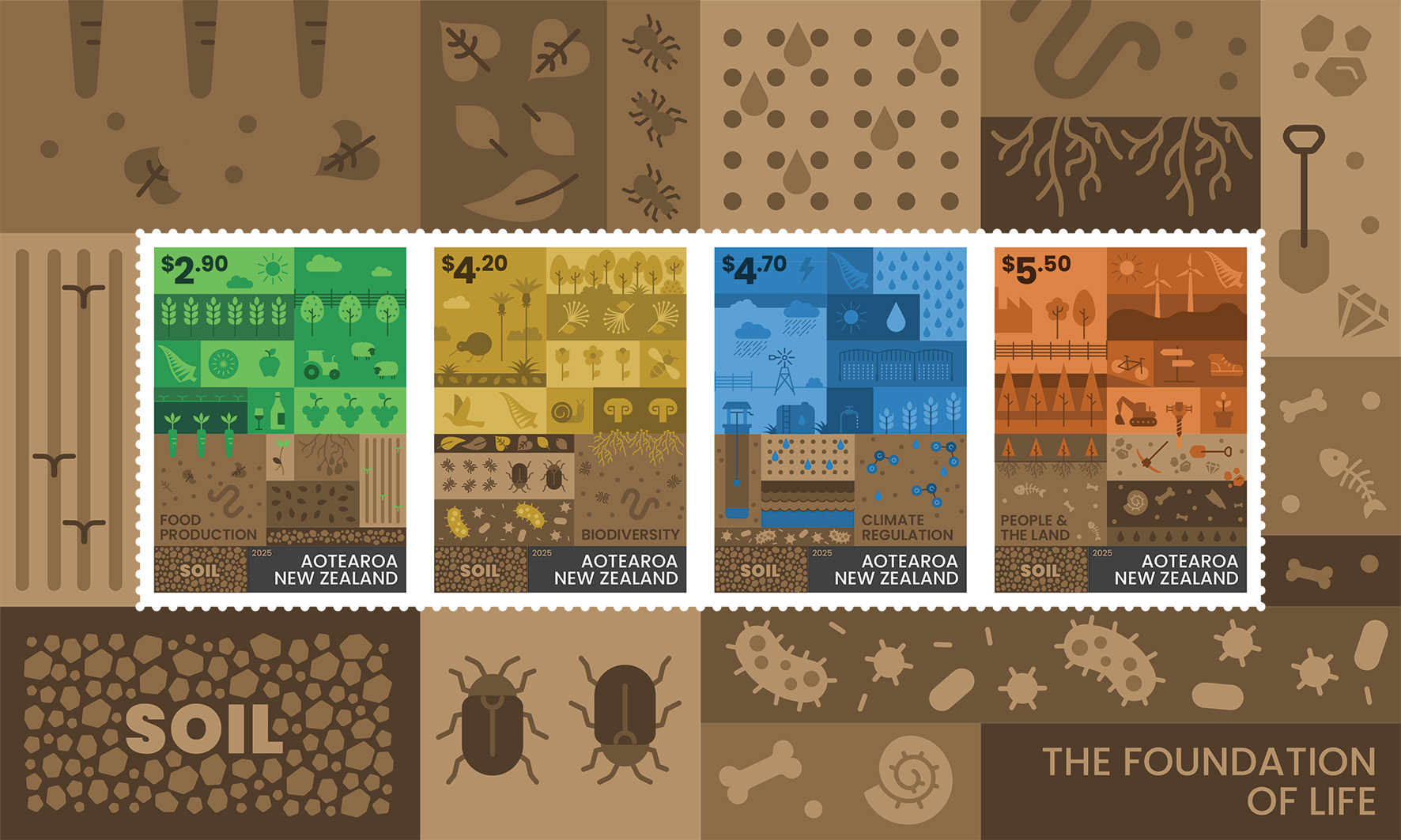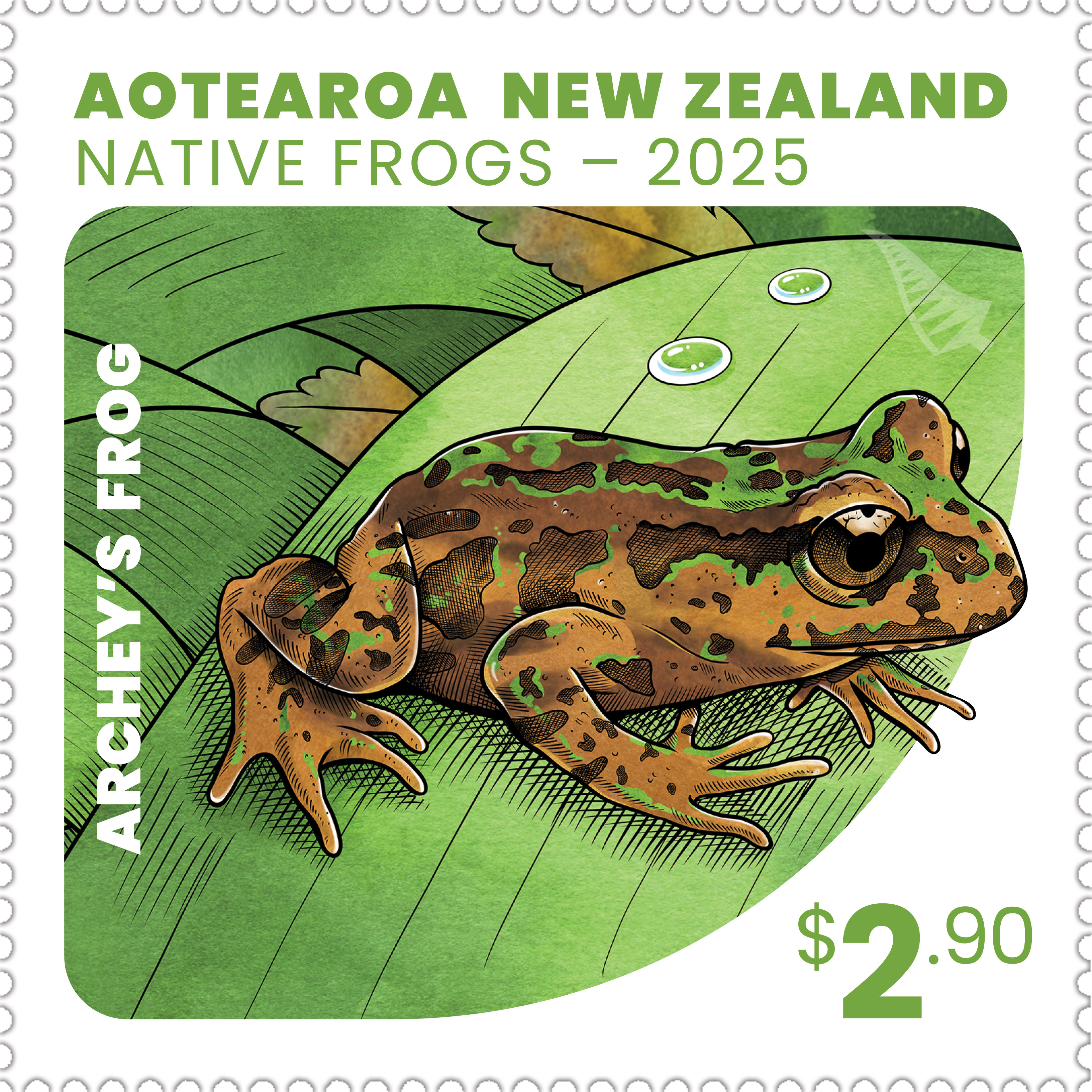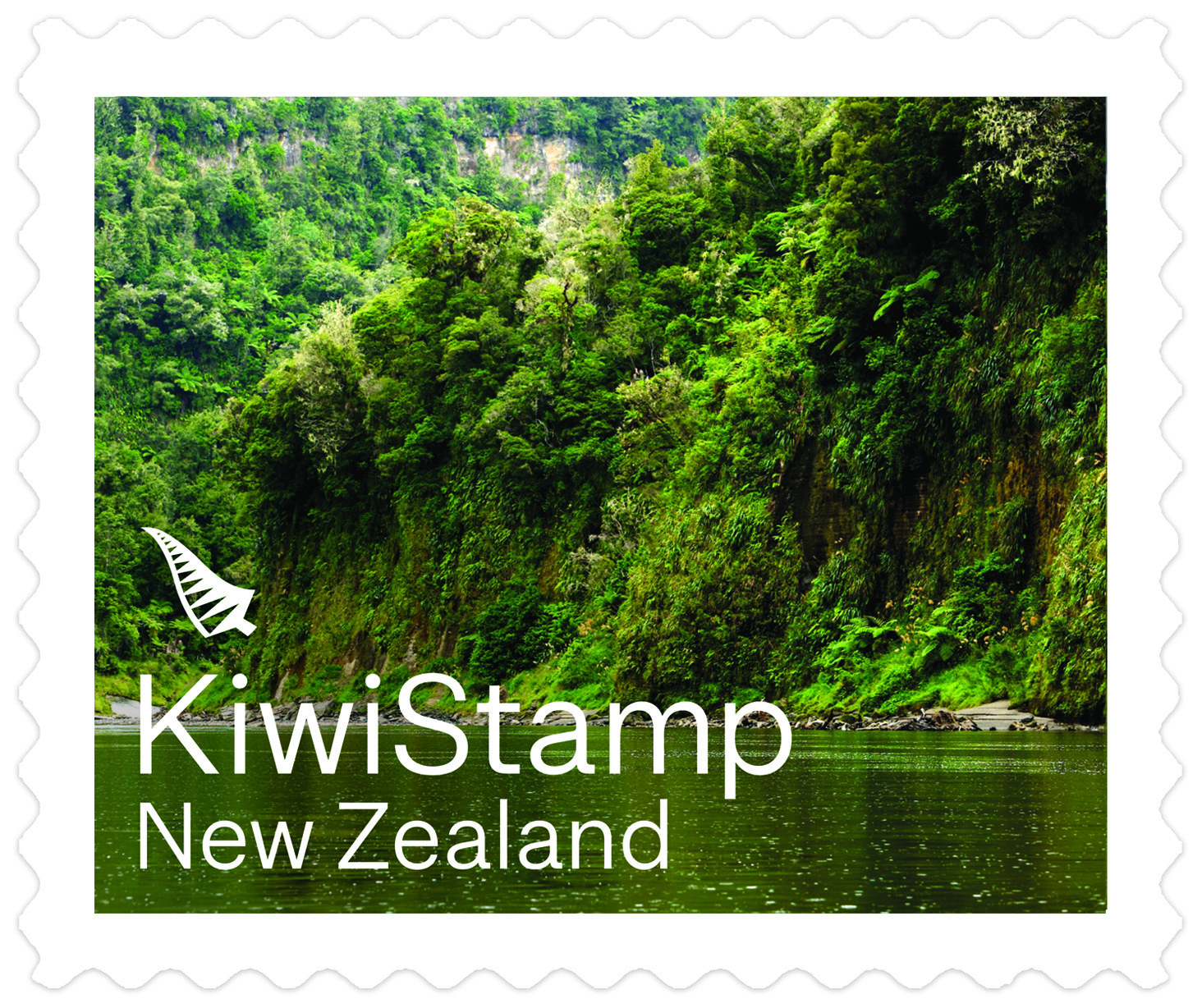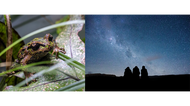All Things Big and Small. Treasuring Our Natural World.
Posted by Lynette Townsend on 7th Jul 2025
Birds that don't fly, frogs that live in the forest and a river that's legally a person - Aotearoa New Zealand could be regarded to be a bit of an oddball nation. Alongside the country’s reputation for being one of the most beautiful places in the world, with dramatic landscapes, clear night skies and a distinctive range of animals, the natural world here offers an incredible range of things to celebrate, learn about and, most importantly, protect.
NZ Post’s stamps and commemorative coins have consistently featured landscapes, and unique plants and animals found in Aotearoa New Zealand. During June and July, this has been particularly true with June’s stamps focusing on soil, the Aoraki Mackenzie Dark Sky Reserve, landscapes created from extinct and dormant volcanoes and a coin featuring the extinct Haast’s eagle. July’s stamps highlighted native frogs, and new KiwiStamps showcased a range of spectacular rivers. A soon-to-be -released coin features artist Shane Hansen’s ‘Te Kiwi-nui’, North Island brown kiwi.
What’s interesting about this cluster of nature-focused products is that they represent both large-scale and tiny, unseen aspects of our natural environment. They highlight that big and small things are equally important aspects of our environment to protect. Extinct native frogs and the Haast’s eagle, included on stamps and commemorative coins, provide important reminders about what can happen when we don’t protect our land, waterways and sky.
June’s commemorative stamp issues, Dark Sky Project and Soil: The Foundation of Life, show two of the least obvious areas of environmental conservation. There are two dark sky reserves here, one in the Wairarapa in the North Island, and another in Aoraki/Mt. Cook National Park and the Mackenzie Basin in the South Island. Aoraki Mackenzie Dark Sky Reserve was the first to be established and is the one showcased in the Dark Sky Project sheetlet. Dark sky reserves are spaces with stunningly clear night skies that enable people to see the stars, planets and galaxies without the barrier of light pollution. Dark skies are important for cultural reasons too, and for animals that rely on natural patterns of light and dark to live their lives. To find out more about Dark Sky Project visit their website.

Soil isn’t usually the first aspect of environmental conservation that comes to mind, but good soil health has been proven to be extremely important for combatting climate change. As the title highlights, soil is the very foundation of life, and key to our food production, healthy biodiversity, water and climate regulation, and many of our cultural and recreational activities rely on the quality of our soil. Soil scientists from Manaaki Whenua Landcare Research partnered with NZ Post in the development of these stamps. Their deep knowledge is reflected in the selection of symbols shown on the stamps, behind which is a wealth of knowledge and research.
One mind-blowing fact about soil is that just one tablespoon contains more living organisms than there are people in the world. Most are microscopic organisms doing the hard yards in chemical transformations and enhancing plant nutrition. Larger soil dwellers such as earthworms, spiders and beetles are more familiar to us. As ‘ecosystem engineers’ they help to break up leaf litter, mix the soil, and improve soil structure. We’ve been sharing information about soil via Facebook and Instagram but you can also find out more and dig into some great resources on the Landcare website.

July’s focus on native frogs and rivers offers another opportunity to reflect other large and small scale features of this country. The focus on rivers was inspired by a summer trip down the Whanganui River – classified as one of New Zealand’s ‘Great Walks’. Throughout this canoe trip we were surrounded by steep banks covered in lush green bush, and thanks to our Māori guide we got to discover the rich history and culture of the area too. Whanganui iwi have a proverb, ‘Ko au te awa, ko te awa ko au - I am the river and the river is me.’ On this trip we began to understand some of what the proverb means. The Whanganui River is also remarkable for being the first river in the world to be recognised as a legal person and a living being. While this is the only river given this status, other rivers in Aotearoa New Zealand are equally steeped in history and are profoundly important to Māori and other New Zealanders.

While the stamps showcase the beauty of five rivers, they are also an important reminder that our waterways require urgent environmental protection. Environmental changes to rivers and any part of our landscape and climate are often felt the most strongly by the smallest animals. Frogs for example, more than most creatures, are sensitive to disease, pollution, chemicals and environmental changes, as they absorb many things through their sensitive skin.
Fossil records show that our native frogs were spread throughout the North and South Islands several thousand years ago. The three remaining native species have declined significantly in range and numbers over the past 1,000 to 2,000 years, as land has been cleared of forest and predators have been introduced. Native frogs/pepeketua belong to the genus Leiopelma, an ancient and primitive group of frogs that has changed very little in 70 million years. You can learn more about these special creatures on the Department of Conservation's website.
For the development of the Native Frogs stamps we partnered with NZFrogs. Their website and a newly published book provide all you need to know about Archey's frog, Hamilton’s frog and Hochstetter's frog - our surviving native frogs which feature on the stamps. For additional information and to see the full range of products, including a cute set of greeting cards, see our Native Frogs issue page.
